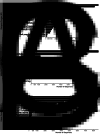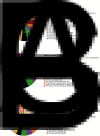De novo transcriptome reveals blood coagulation/antithrombin factors and infection mechanisms in Angiostrongylus cantonensis adult worms
- PMID: 33729108
- PMCID: PMC11010222
- DOI: 10.1017/S0031182021000469
De novo transcriptome reveals blood coagulation/antithrombin factors and infection mechanisms in Angiostrongylus cantonensis adult worms
Abstract
Angiostrongylus cantonensis is the main aetiological agent of eosinophilic meningoencephalitis in humans. Several outbreaks have been documented around the world, cementing its status as an emerging global public health concern. As a result, new strategies for the diagnosis, prophylaxis and treatment of cerebral angiostrongyliasis are urgently needed. In this study, we report on the de novo assembly of the A. cantonensis transcriptome, its full functional annotation and a reconstruction of complete metabolic pathways. All results are available at AngiostrongylusDB (http://angiostrongylus.lad.pucrs.br/admin/welcome). The aim of this study was to identify the active genes and metabolic pathways involved in the mechanisms of infection and survival inside Rattus norvegicus. Among 389 metabolic mapped pathways, the blood coagulation/antithrombin pathways of heparan sulphate/heparin are highlighted. Moreover, we identified genes codified to GP63 (leishmanolysin), CALR (calreticulin), ACE (peptidyl-dipeptidase A), myoglobin and vWD (von Willebrand factor type D domain protein) involved in the infection invasion and survival of the parasite. The large dataset of functional annotations provided and the full-length transcripts identified in this research may facilitate future functional genomics studies and provides a basis for the development of new techniques for the diagnosis, prevention and treatment of cerebral angiostrongyliasis.
Keywords: A. cantonensis transcriptome; Angiostrongylus cantonensis; anticoagulant/antithrombotic pathways; cerebral angiostrongyliasis; eosinophilic meningitis; functional annotation; molecular diagnostics.
Conflict of interest statement
The authors declare there are no conflicts of interest.
Figures







Similar articles
-
Endemic angiostrongyliasis in the Brazilian Amazon: natural parasitism of Angiostrongylus cantonensis in Rattus rattus and R. norvegicus, and sympatric giant African land snails, Achatina fulica.Acta Trop. 2013 Jan;125(1):90-7. doi: 10.1016/j.actatropica.2012.10.001. Epub 2012 Oct 13. Acta Trop. 2013. PMID: 23072946
-
Chi3l3: a potential key orchestrator of eosinophil recruitment in meningitis induced by Angiostrongylus cantonensis.J Neuroinflammation. 2018 Feb 2;15(1):31. doi: 10.1186/s12974-018-1071-2. J Neuroinflammation. 2018. PMID: 29391024 Free PMC article.
-
[A review of researches on Angiostrongylus cantonensis and angiostrongyliasis cantonensis: analysis of related literatures].Zhongguo Xue Xi Chong Bing Fang Zhi Za Zhi. 2012 Apr;24(2):228-31. Zhongguo Xue Xi Chong Bing Fang Zhi Za Zhi. 2012. PMID: 22799177 Review. Chinese.
-
Angiostrongylus cantonensis and rat lungworm disease in Brazil.Hawaii J Med Public Health. 2013 Jun;72(6 Suppl 2):18-22. Hawaii J Med Public Health. 2013. PMID: 23901376 Free PMC article.
-
Angiostrongylus cantonensis: a review of its distribution, molecular biology and clinical significance as a human pathogen.Parasitology. 2016 Aug;143(9):1087-118. doi: 10.1017/S0031182016000652. Epub 2016 May 26. Parasitology. 2016. PMID: 27225800 Review.
Cited by
-
Insights into the biology of the rat lungworm, Angiostrongylus cantonensis.Parasit Vectors. 2025 Apr 30;18(1):163. doi: 10.1186/s13071-025-06790-3. Parasit Vectors. 2025. PMID: 40307883 Free PMC article. Review.
References
-
- Akasaka M, Kato KH, Kitajima K and Sawada H (2013) Identification of novel isoforms of vitellogenin expressed in ascidian eggs. Journal of Experimental Zoology 320, 118–128. - PubMed
-
- Akiyoshi S, Nomura KH, Dejima K, Murata D, Matsuda A, Kanaki N, Takaki T, Mihara H, Nagaishi T, Furukawa S, Ando KG, Yoshina S, Mitani S, Togayachi A, Suzuki Y, Shikanai T, Narimatsu H and Nomura K (2015) RNAi screening of human glycogene orthologs in the nematode Caenorhabditis elegans and the construction of the C. elegans glycogene database. Glycobiology 25, 8–20. - PMC - PubMed
-
- Alexa A, Rahnenführer J and Lengauer T (2006) Improved scoring of functional groups from gene expression data by decorrelating GO graph structure. Bioinformatics (Oxford, England) 22, 1600–1607. - PubMed
-
- Alicata JE (1965) Biology and distribution of the rat lungworm, Angiostrongylus cantonensis, and its relationship to eosinophilic meningoencephalitis and other neurological disorders of man and animals. Advances in Parasitology 3, 223–248. - PubMed
-
- Barrett J (1983) Lipid metabolism. In: Arme C and Pappas PW (eds), Biology of the Eucestoda. London: Academic Press, vol. 2, pp. 391–419.
Publication types
MeSH terms
Substances
Supplementary concepts
LinkOut - more resources
Full Text Sources
Other Literature Sources
Research Materials
Miscellaneous

